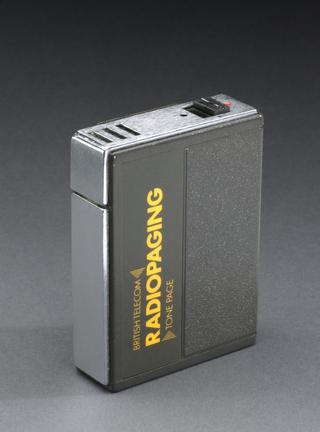
Cooke and Wheatstone's four needle telegraph, 1838
- inventor:
- CHARLES WHEATSTONE













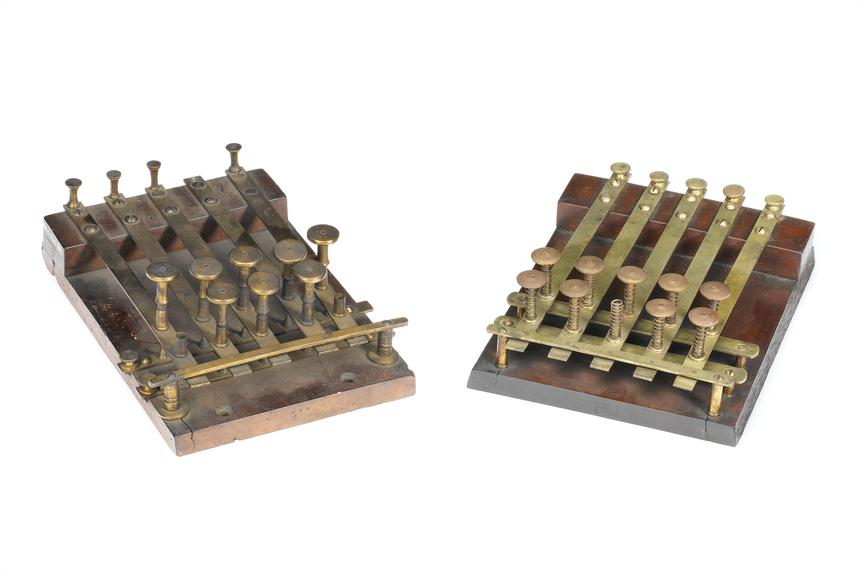
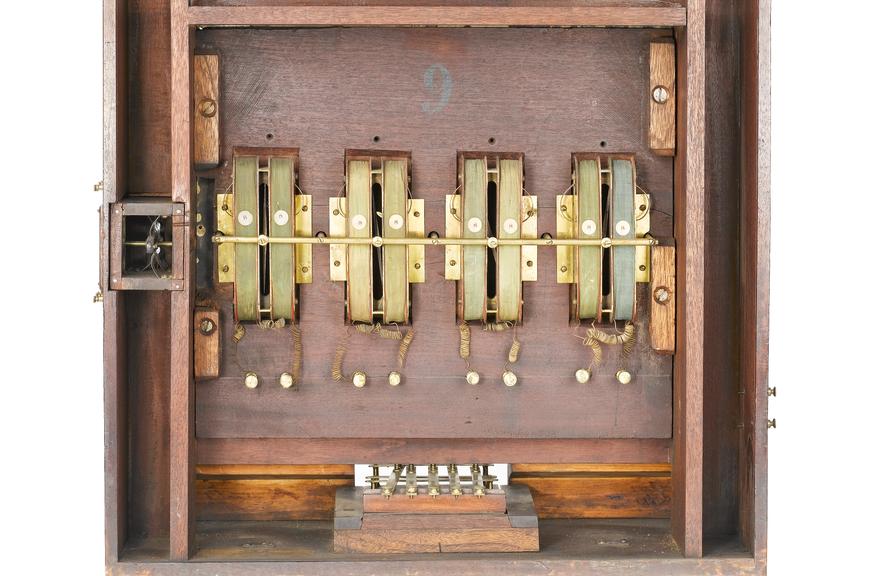





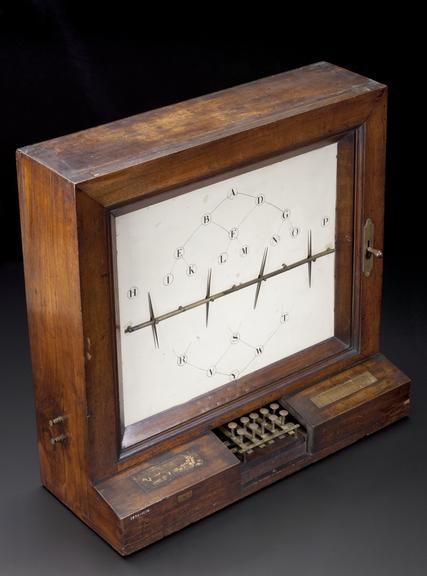


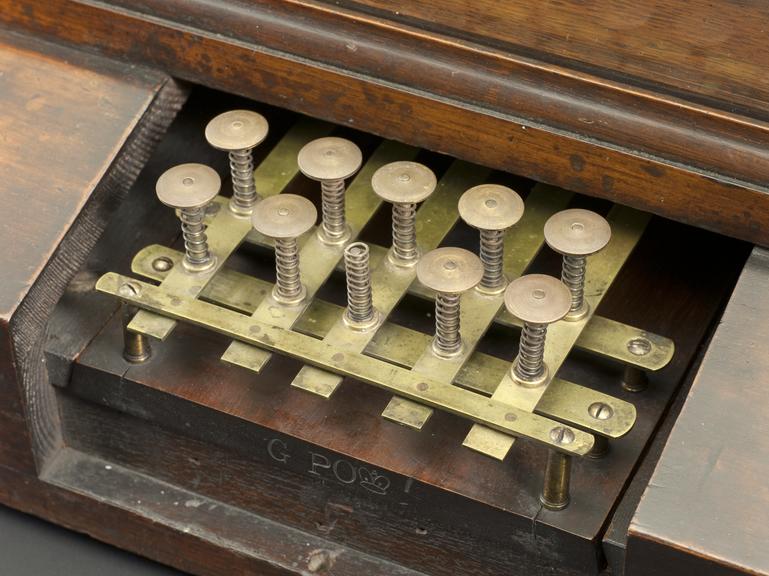

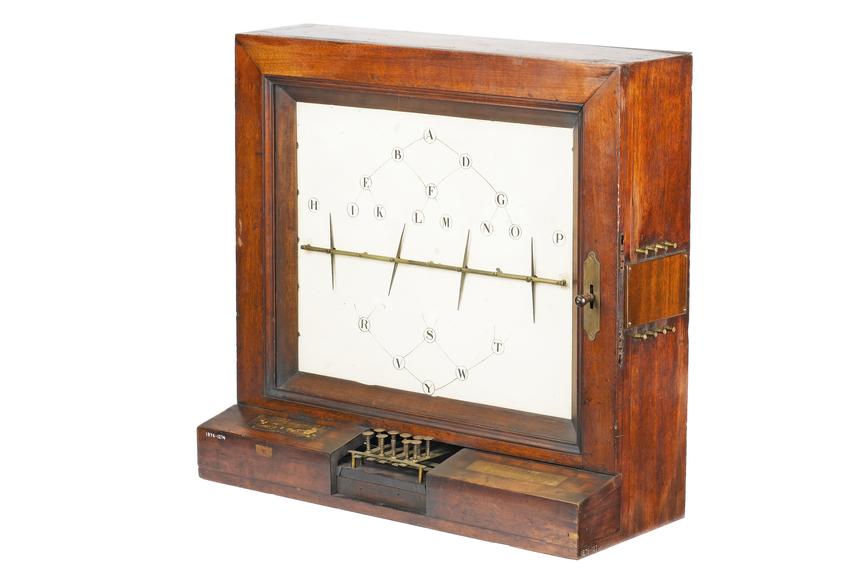
Cooke and Wheatstone's four needle telegraph, unknown maker, England, 1838.
William Cooke and Charles Wheatstone were pioneers of electric telegraphy. Their original English patent was granted in 1837, and provided for the use of both four- and five-needle telegraph instruments. This four-needle telegraph, however, was the subject of a separate patent (No. 7614), which referred to an intermediate station that could send or receive messages in both directions. Telegraphs like these included a change-over switch or 'circuit director'. The four-needle telegraph also represented a transitional stage between the five-needle instrument, where each letter could be directly indicated, and the later double-needle instrument, which employed a signalling code.
Details
- Category:
- Telecommunications
- Object Number:
- 1876-1274
- Materials:
- glass, brass (copper, zinc alloy), mahogany (wood), paint, copper (metal), paper (fibre product) and cotton (fibre)
- Measurements:
-
overall: 550 mm x 575 mm x 225 mm, 15kg est.
- type:
- telegraph
- credit:
- Donated by HM Postmaster General




